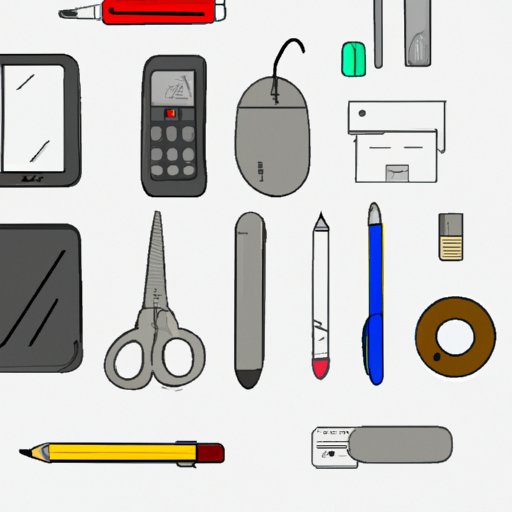
Is Krita Free? Exploring the Pros and Cons of this Digital Art Software
Krita is a free, open-source digital painting and art creation software that has been gaining popularity in recent years. This article will explore the features of Krita, compare it to other popular paid software, provide a step-by-step tutorial on getting started with Krita, speak with artists who use the software, and explain how Krita is able to remain free for users. Whether you’re a beginner or an experienced artist, this guide will help you decide if Krita is the right software for you.
The Pros and Cons of Krita
Krita is an excellent digital art software that has a lot of great features, strengths, and weaknesses. One of the biggest pros of Krita is that it is completely free to download and use, unlike many other digital art software options. Krita is also an open-source program, which means that users can contribute to the software’s development by creating their own plugins and add-ons.
Some of the other notable features of Krita include:
- Customizable brushes and brush engines.
- Layer masks.
- Vector graphics support.
- Resource management.
- Animation and video editing.
- Advanced Color Manipulation tools.
While Krita does have a lot of great features, it does come with its own set of weaknesses. For example:
- The software may run slower on some systems, especially those with low memory or processing power.
- Krita’s user interface can be complex and overwhelming for beginners, at first.
- It lacks a few of the advanced features and tools that are seen in paid software.
Krita vs Other Popular Paid Software
While Krita is free and open-source, it is often compared to other popular paid software like Adobe Photoshop. There are certainly some differences between paid software and Krita, but that does not mean that Krita is not a valid or strong contender in the digital art software sphere.
Some of the differences between Krita and paid software include:
- Number of features
- User interface and ease of use
- Technical support offered
Even though Krita might not have quite as many features as paid software does, it certainly has more than enough functionality to create beautiful, professional-quality art and digital pieces. And since Krita is free, the lack of some advanced features is certainly not a dealbreaker.
Step-by-Step Tutorial on Getting Started with Krita
Getting started with Krita is simple and easy, and it should not take you long to become familiar with the interface and tools. Here is a step-by-step tutorial on how to get started with Krita:
- Download Krita from the official website.
- Install and launch the program.
- The first time you open Krita, you will be asked to set up some basic preferences, such as your preferred language and shortcut keys.
- Once you’ve set your preferences, you will be greeted with the Krita interface.
- The interface is split up into several panels including the Toolbox, Mixer, and Color Palette. You can easily toggle what you want to have displayed.
- From there, you can open a new canvas and begin experimenting with Krita’s brushes, colors, and tools to create your very own digital masterpieces.
The more you use Krita, the more comfortable you will become with the interface and all that it has to offer.
Digital Artists Who Use Krita
Many digital artists are turning to Krita as their primary digital art software. We spoke with a few of these artists to get their thoughts:
- “Krita has become my go-to software because it’s fast and efficient,” says Artist 1. “Plus, its user-friendly interface has made it easy to jump into without being overwhelmed by settings and configuration.”
- “I’ve been using Krita for about a year now and it’s helped me create some of my most amazing art pieces,” says Artist 2. “I love the customizability of the brushes and the fact that it’s free makes it even better!”
- “Krita is truly amazing and it’s pretty much all I use now,” says Artist 3. “There are so many amazing features and resources available for it, and the fact that they’re all free is just astounding to me.”
How Krita Remains Free for Users
Krita is free and open-source, but how does it remain mostly free for its users? The answer lies with the open-source community.
Open-source software like Krita is created by a community of developers who contribute to the software’s code. This means that anyone can take a look at the code, report issues, and make necessary changes.
This system of community development also brings with it tremendous benefits, such as:
- Lower cost
- Increased flexibility
- Greater security (since bugs are reported and fixed as soon as they’re identified).
Creating and maintaining free open-source software, such as Krita can be done thanks to advances in business models, such as crowdfunding and donations. So there is a constant stream of funds going to the developers behind the software, and allows them to pay for bills when renting servers, paying servers fees, etc.
Conclusion
In conclusion, Krita is an excellent digital art software that offers lots of great features and functionality for free. While it might not have quite as many features as paid software does, it is still a valid and strong contender in the digital art software sphere. Whether you’re an experienced digital artist or a beginner, Krita offers a great way to create beautiful, professional-quality digital art.




